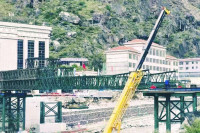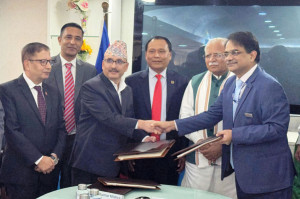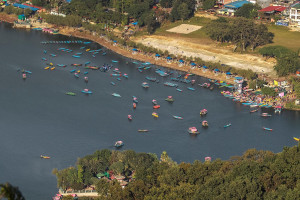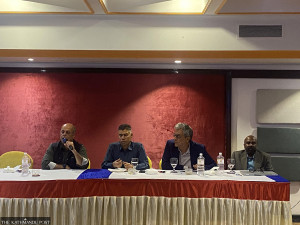Money
Finalisation of Nijgadh airport plan ‘this month’
Newly-appointed Tourism Minister Rabindra Adhikari plans to finalize the construction modality of the long-planned international airport in Nijgadh, Bara within a month.
Newly-appointed Tourism Minister Rabindra Adhikari plans to finalize the construction modality of the long-planned international airport in Nijgadh, Bara within a month.
Successive governments over the last two decades have proclaimed the construction of the airport, which will be the largest in the country, to be a priority; but they have done nothing to move the project forward.
The deadly crash last week of US-Bangla Airlines Flight 211 at the country’s sole international airport in Kathmandu once again prompted the government to issue urgent declarations.
Before the Flight 211 mishap, the government had announced launching the Nijgadh airport project following the March 2015 crash of a Turkish Airlines aircraft that closed the airport for four days, and the April 2015 earthquake that made the government realize the need for a new airport with two parallel runways.
The poor airport infrastructure has also been a big setback to draw foreign visitors to Nepal. But the plan seems to be making no headway. The type of financial and construction modality has been changing with every government. Successive administrations have put forward opposing plans that the airport should be developed through private or public financing.
The airport scheme envisions building a modern airport in Nijgadh, 175 km from Kathmandu in the southern plains, as an alternative to congestion and winter fog at Tribhuvan International Airport (TIA), the country’s sole aerial gateway.
“Finalizing the construction modality of the airport was among the four key decisions made by the minister on the day he assumed office,” said Buddhi Sagar Lamichhane, joint secretary at the ministry. Other decisions were hosting 1.5 million tourists by 2020 and making aggressive promotional activities in India and China by this fiscal year to bring tourists from the world’s largest outbound markets.
The ministry has also decided to extend facilities with the construction of infrastructure like hangars for private carriers wishing to operate from Pokhara International Airport which is under construction.
Recently, four government agencies had suggested three types of modalities to construct the airport in Nijgadh, sparking further confusion which threatens to delay the project that has been in the works for more than two decades.
Tourism Ministry officials said that they had received contrasting advice about the construction modality, which is likely to stall the process if a concrete decision is not made by the new government.
“The new government is here, and it will decide which modality is appropriate,” said Lamichhane. “The finalization of the construction modality will pave the way to table the proposal at the Cabinet.”
Earlier, the National Planning Commission (NPC) said it would be a good idea to build the airport under the engineering, procurement and construction (EPC) modality with government investment. After the construction of the airport is completed, it will be operated under a public-private partnership (PPP) model, bringing foreign or Nepali investors onboard.
“Both modalities should follow a competitive bidding process,” the NPC said. Under the EPC contract, a single contractor assumes the responsibility for all components like design, engineering, construction and procurement.
The contract binds the contractor to deliver the project at the stipulated time and at the predetermined price regardless of any possible cost overruns.
Meanwhile, the Finance Ministry had advised the Tourism Ministry to adopt the engineering, procurement, construction and finance (EPCF) modality by involving government investment to build the new international airport. Under the EPCF model, the contracting firm makes all the arrangements including funding to build the project. The Finance Ministry has also asked the Tourism Ministry to keep the second option, the PPP model, open in case the first one does not work.
Likewise, a high-level panel comprising joint secretaries of the NPC and the Finance and Tourism ministries and the deputy director general of the Civil Aviation Authority of Nepal (Caan) has urged the government to construct the airport under the build own operate and transfer (Boot) model.
This model is often seen as a way to develop large public infrastructure projects with private funding. The project construction modality preferred by the Tourism Ministry is similar to the one recommended by the NPC.
According to a Korean company’s feasibility study, the Nijgadh airport will be able to handle 15 million passengers annually and accommodate the Airbus A380 super jumbo after the first phase of construction.




 24.12°C Kathmandu
24.12°C Kathmandu














